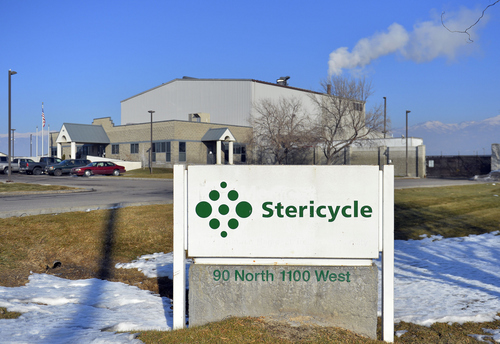This is an archived article that was published on sltrib.com in 2014, and information in the article may be outdated. It is provided only for personal research purposes and may not be reprinted.
The medical waste incinerator in North Salt Lake had the misfortune of finding itself slowly surrounded by a neighborhood, resided in by neighbors who were understandably bothered by the stuff that poured out of the smokestacks on good days, enraged by what leaked out on the many occasions when the plant exceeded its permitted limits.
Now Stericycle, the company that owns the plant, is doing a deal with a state agency that would see the hazardous waste operation move to the other side of the Great Salt Lake.
Nobody is promising that the new plant will be less poisonous to the atmosphere, just that there won't be nearly as many people around to see it and complain about it.
That's not progress. Progress would be for Utah to join the 39 other states that have prohibited the incineration of medical wastes and stop looking at Stericycle as a fit recipient of state economic development efforts.
Sure, it would enhance the lives, lungs and property values of the relatively few people who own homes in that neighborhood if they could wave good-bye to the plant that chugs away destroying old drugs, comparatively benign medical waste and excised body parts. It is not fair that a small group of innocent people should take the brunt of the poisons that result from a medical system that benefits everyone.
But those folks also served as a kind of early warning system — canaries in our coal mine — to warn us all when Stericycle's emissions were over permitted red lines. Shove the whole operation out to the west desert, and the risk of hazardous emissions doesn't really go down or stay out of the Salt Lake Valley airshed downwind of the proposed location. It just gets easier to hide, more difficult to pinpoint.
It is troubling, but not surprising, that the Utah School and Institutional Trust Lands Administration is facilitating this plan by agreeing to sell Stericycle the 40-acre tract for the new plant. It is in keeping with SITLA's habit — some would argue with its statutory obligation — to maximize short-term profit at the expense of long-term health and safety. Just as the agency does when it gets all hot and bothered to lease lands for oil and gas exploration at the cost of conservation, sustainability, tourism and recreation.
There is a stadium full of regulatory and political hurdles that would have to be cleared before Stericycle could fire up at its new home. But the best thing would be for Utah to ban the incineration of medical wastes and for SITLA to extricate itself from a deal that banks on the survival of an industry that is at once dangerous and obsolete.



